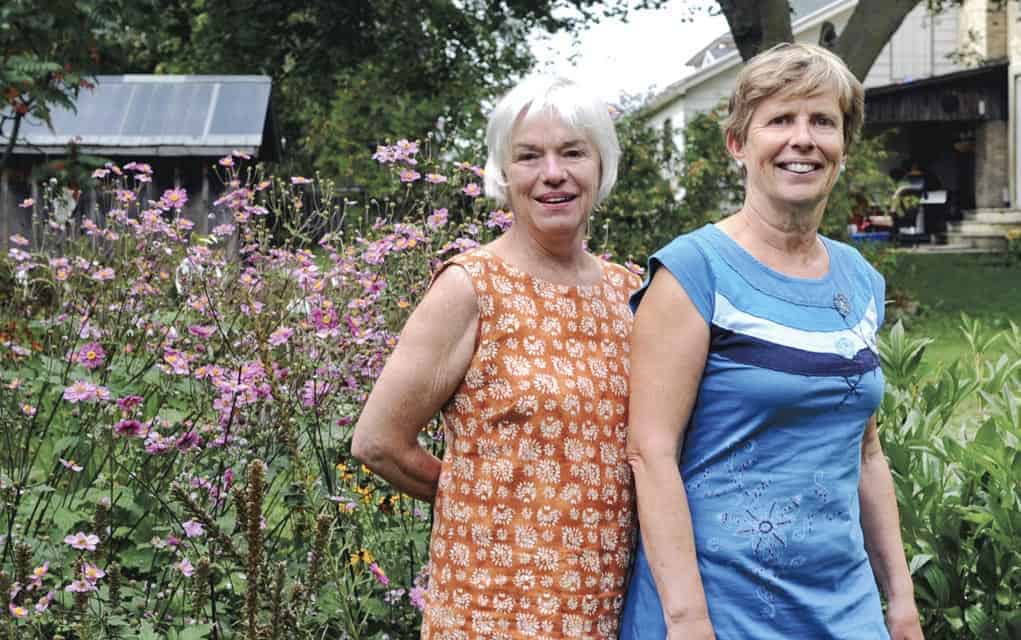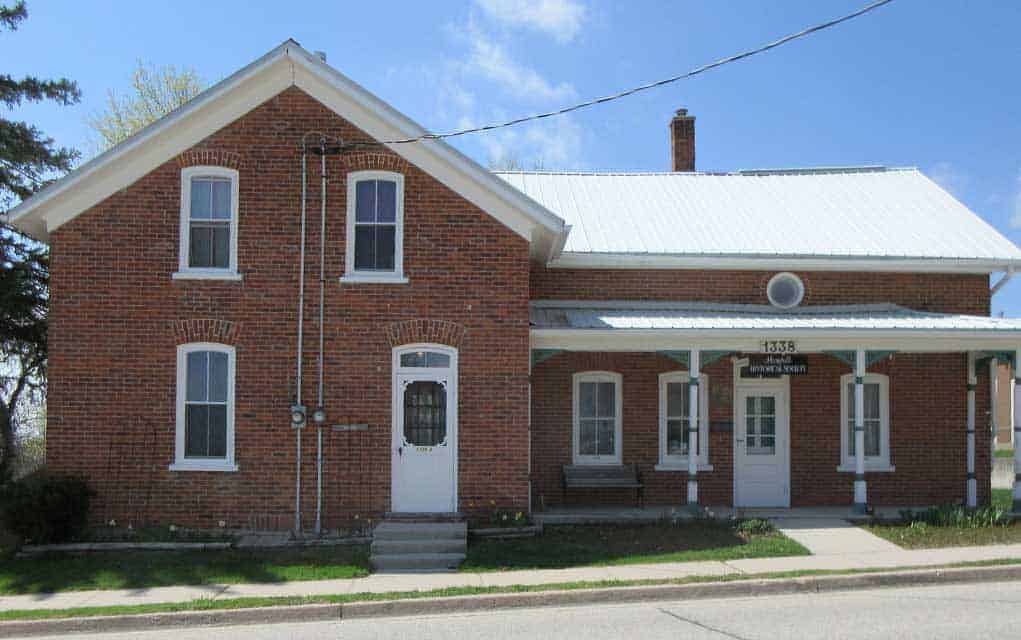When the last of the ash trees that lined Elmira’s main thoroughfare fell prey to the emerald ash borer and were cut down in 2015, the core may have lost a portion of its charm and character.
There have been a number of tree-planting programs by a variety of community groups to help make Elmira greener, but now one group is working with the township to create a single unified plan for the town that will guide these disparate projects over the next 20 years.
In drafting that plan, the group is asking for the public’s input at a meeting Monday night at Trinity United Church.
“This is people’s chance to contribute ideas that anyone who lives in this community I’m sure at some point or another has said: ‘Why don’t they blank, blank, blank?’” said Susan Bryant, chair of the committee behind the project, the Elmira Greening Initiative.
“They say it to us,” added Inga Rinne, a fellow committee member.
“Or, ‘why did they?’” said Bryant. “So this is their chance to say, ‘OK, here’s what I feel I’m missing in this community, or that I think will enhance life in this community.’”
Bryant and Rinne are members of the Township of Woolwich Environmental Enhancement Committee (TWEEC), a volunteer group that’s an official committee of township council. The group hired an environmental consultancy firm, Natural Resource Solutions Inc., to create a plan that the community can work towards in Elmira over the next 20 years. The hope is that once the plan is drafted, it will be officially adopted by the township.
It’s still early to say what a final plan might look like, but there are a number of questions for the public to consider. Where would people like to see trees and green spaces, parks and benches in Elmira? What are the priority locations? What varieties of trees and plant life do people want to see?
One of the disadvantages to the uniform ash trees planted along Arthur Street was that they were all susceptible to the same disease as well. Removing the stricken trees back in 2015 was estimated to cost the township $6,000. With limited resources available to devote to green infrastructure projects in the town, Bryant and Rinne say a plan can help avoid unnecessary expenses like that, and encourage frugal spending of time and money in the future.
A final greening plan for Elmira could also affect bylaws for places like parking lots by requiring certain levels of tree cover per parking spot, they suggest. There could also be requests to change the rules for future developments in the township, like altering the amount of greenery needed for residential construction.
The potential impact on local businesses is why the group is keen to hear not only from the residents, but the business community in Elmira too.
It’s not all rules and regulations, however. There is an economic advantage for businesses in Elmira, says Bryant, based on the studies she’s read, by having a greener and more inviting downtown core.
“They say that the economic benefits are 10 to 15 per cent more business because you’ve got pedestrian traffic and you have an attractive downtown where there is some green shade and beauty. You just get more people wanting to visit,” she said.
There are environmental benefits, with added tree cover improving air and water quality, combating climate change, improving soil’s water absorption.
“This green infrastructure is going to hopefully address our ways of reducing the runoff in the urban area,” said Rinne. “So, you know, you get your thunderstorm, you get all this water that washes all kinds of less-than-desirable stuff off of the roads…”
“…into people’s basements, for one thing,” continued Bryant. She adds that some of the newer subdivisions in Elmira do have stormwater management ponds to deal with runoff, but the older downtown area in Elmira does not.
“So gasoline and rubber bits and trash and chemicals – whatever lands on the roads ends up going straight to the creek. So if you have, say, swales of trees in the middle of the parking lot properly planted, that absorbs a lot of that (water).”
The Elmira Greening Initiative is not a project unique to the town. Bryant and Rinne point to plans in other municipalities, like the Wellington County’s Green Legacy Program, which began in 2004 and has been able to plant more than a million trees since, according to the county’s website. Within Waterloo Region, the city of Kitchener has begun consultations on an urban forestry plan to improve upon their local green infrastructure.
“I think the growing recognition is that just like roads and bridges and sewers are infrastructure, our trees and green spaces are infrastructure as well, and have an importance as well beyond the ‘oh, isn’t that pretty?’” said Rinne.
TWEEC has been active in the community since 2004, organizing tree plantings and community clean-ups with the help of local volunteers. One of their projects has been to plant one tree for every person in Woolwich; at the moment, they’ve planted 22,916 trees, Rinne noted.
The meeting for the Elmira Greening Initiative will be on September 25 at 7 p.m. at the Trinity United Church, 21 Arthur St. N. The meeting will be facilitated by two urban forestry experts, Katharina Richter and Brett Woodman, from the environmental consultancy group.









